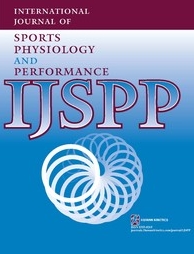Ferioli D1,2, Rampinini E2, Bosio A2, La Torre A1, Maffiuletti NA3.
1, Department of Biomedical Science for Health, Università degli Studi di Milano, Milano, Italy; 2, Human Performance Laboratory, Mapei Sport Research Centre, Olgiate Olona, VA, Italy; 3, Human Performance Lab, Schulthess Clinic, Zurich, Switzerland

ABSTRACT
Purpose: To examine differences between adult male basketball players of different competitive levels (study 1) and changes over a basketball season (study 2) of knee-extensor peripheral muscle function during multistage change-of-direction exercise (MCODE).
Methods: In study 1, 111 players from 4 different divisions completed the MCODE during the regular season. In study 2, the MCODE was performed before (T1) and after (T2) the preparation period and during the competitive season (T3) by 32 players from divisions I, II, and III. The MCODE comprised 4 levels of increasing intensity for each player. The twitch peak torque (PT) of knee extensors was measured after each level. PTmax (the highest value of PT) and fatigue were calculated.
Results: In study 1, the authors found possibly small differences (effect size [ES] [90% confidence interval] -0.24 [0.39]) in fatigue between divisions I and II. Division I was characterized by likely (ES 0.30-0.65) and very likely to almost certain (ES 0.74-1.41) better PTmax and fatigue levels than divisions III and VI, respectively. In study 2, fatigue was very likely reduced (ES -0.91 to -0.51) among all divisions from T1 to T2, whereas PTmax was likely to very likely reduced (ES -0.51 to -0.39) in divisions II and III.
Conclusions: Professional basketball players are characterized by a better peripheral muscle function during MCODE. Most of the seasonal changes in peripheral muscle function occurred after the preparation period. These findings inform practitioners on the development of training programs to enhance the ability to sustain repeated change-of-direction efforts.
Int J Sports Physiol Perform. 2019 May
PMID: 30427248 DOI: 10.1123/ijspp.2018-0366